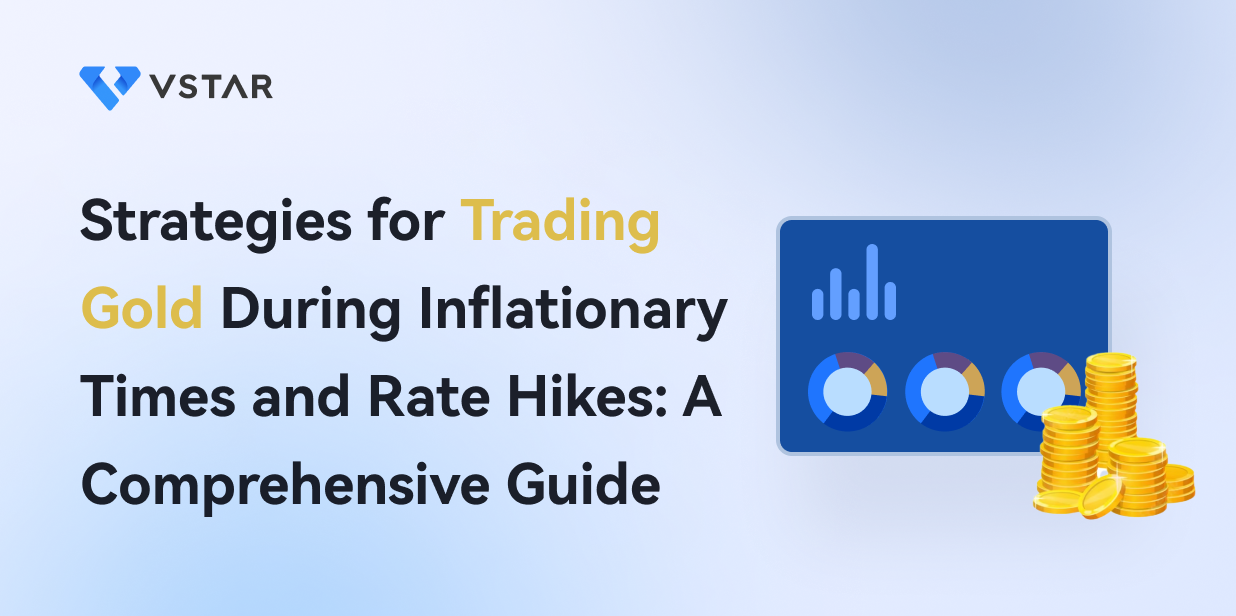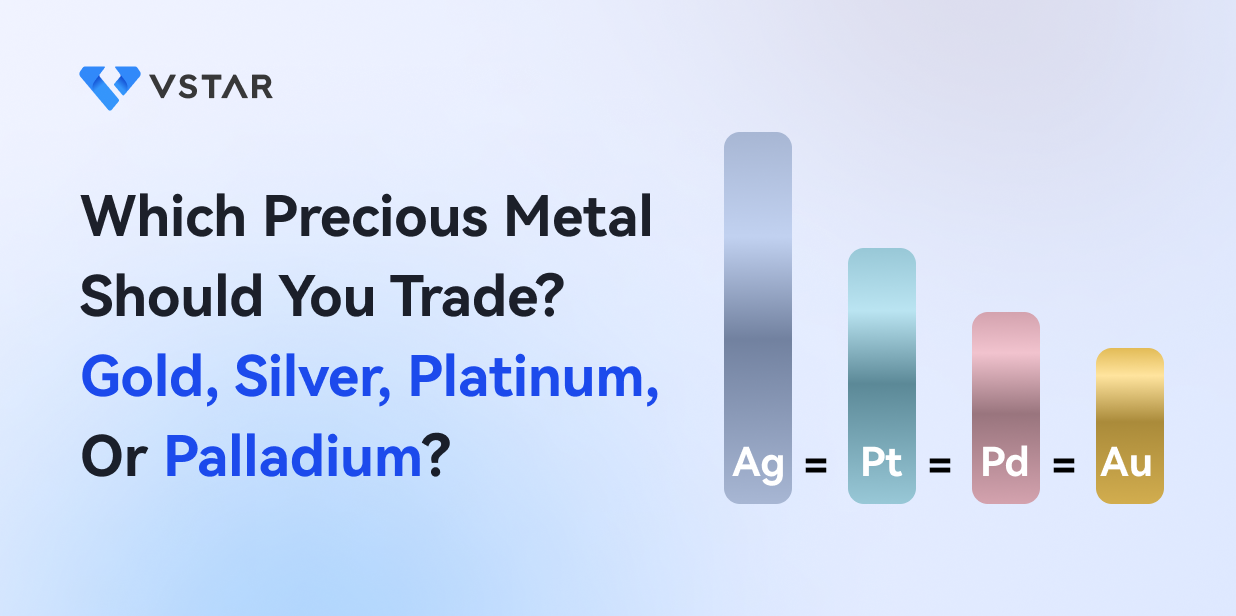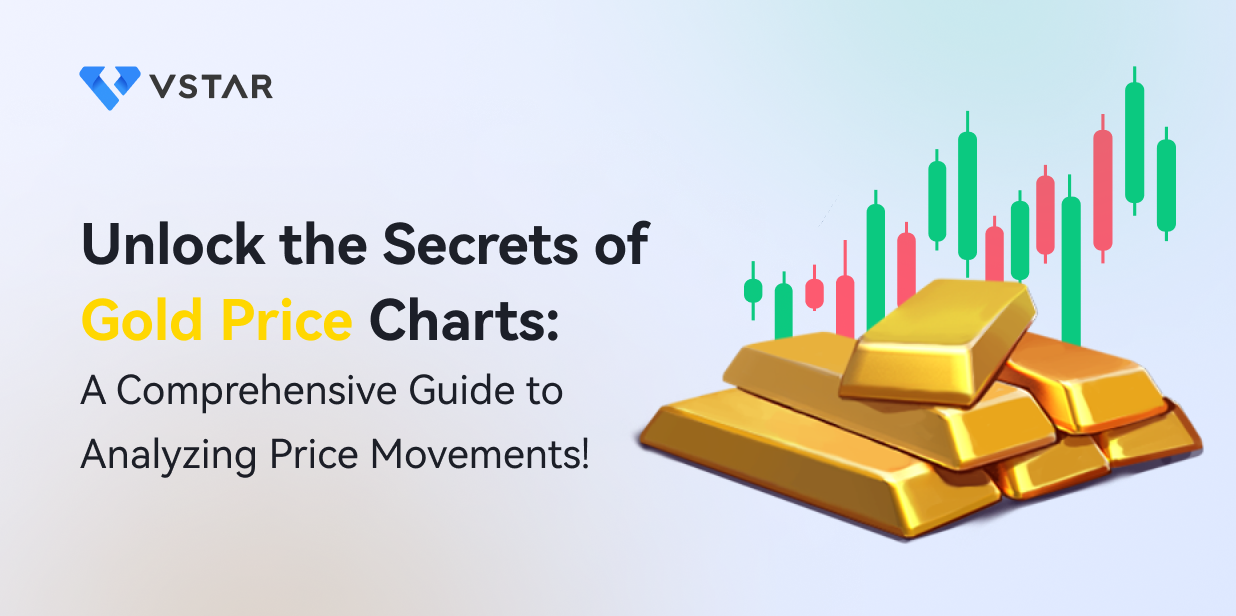Introduction
Gold has long been considered a traditional hedge against inflation and a safe haven asset, making it a popular choice for investors in uncertain economic times. Looking ahead to 2023, the global economy faces a challenging environment with rising inflation rates and the prospect of rising interest rates. In such conditions, well-designed trading strategies can play a critical role in capitalizing on gold price movements.
The current high-inflation environment is driven by several factors, including increased consumer demand, supply chain disruptions, and rising commodity prices. Central banks may respond by raising interest rates to combat inflationary pressures. These developments can have a significant impact on gold's performance in the financial markets.
Let's dive into the strategies that will help you make the most of gold trading in today's dynamic economic climate. Whether you're a seasoned trader or just starting, we've got you covered with step-by-step techniques and easy-to-implement tips that work quickly and efficiently.
Key Market Drivers of Gold

Image Source: Unsplash
As inflationary pressures and interest rate hikes continue to shape the global economic landscape in 2023, understanding the key market drivers influencing the price of gold is essential for successful trading. Gold has historically served as a safe haven asset during times of economic uncertainty, making it an attractive option for investors looking to protect their wealth.
High inflation has a direct impact on gold prices as investors turn to the precious metal as a store of value to hedge against currency devaluation. In addition, interest rate hikes by the Federal Reserve and other central banks have a significant impact on the price of gold. As interest rates rise, the opportunity cost of holding non-yielding assets such as gold increases, which can lead to short-term price adjustments.
In addition, geopolitical conflicts and economic uncertainties can trigger spikes in gold demand as investors seek refuge from market volatility. These factors, combined with current macroeconomic conditions, create a dynamic environment for gold trading. By recognizing and analyzing these market drivers, you can better formulate your trading strategies and effectively take advantage of gold's potential price movements.
Ways to Invest in Gold

Image Source: Unsplash
Investing in gold can be done in several ways, including purchasing physical gold such as coins or bars, investing in gold ETFs (exchange-traded funds), buying gold mining stocks, or opting for gold futures and options contracts.
Each method offers different levels of risk and potential return, allowing investors to choose the approach that best suits their financial goals and risk tolerance.
Buying physical gold
Owning physical gold in the form of bullion coins or bars offers tangible benefits such as direct ownership and potential privacy. It also serves as a store of value, which tends to perform well during inflationary periods.
However, it is important to consider secure storage options, as storing large amounts of gold at home can be risky. Professional vault storage or safe-deposit boxes in reputable institutions are viable alternatives.

Image Source: Unsplash
Investing in gold exchange-traded funds (ETFs)
Gold ETFs offer a convenient and accessible way to invest in gold without holding physical gold. These funds typically track the price of gold and offer high liquidity. Investors can buy and sell gold ETF shares throughout the trading day on major exchanges. While gold ETFs offer diversification and ease of trading, they do not provide the tangible ownership aspect of physical gold.
Trading Gold Futures and Options
Trading gold futures and options involves speculating on the future price of gold without owning the underlying asset. Futures contracts obligate the buyer to purchase gold at a predetermined price and date, while options provide the right (but not the obligation) to buy or sell gold at a specified price within a specified period. Trading derivatives can magnify potential gains, but it comes with increased risk and requires a solid understanding of market dynamics.
Investing in Gold Mining Stocks
Gold mining stocks provide exposure to the gold market through the shares of mining companies. The performance of these shares is influenced not only by the price of gold but also by the operational efficiency and financial health of the mining companies. Investors should carefully evaluate the management, reserves, and production potential of mining companies before investing.
Trading Gold with Contracts for Difference (CFDs)
CFDs allow traders to speculate on gold price movements with leverage but don't involve physical ownership. Understand the features of CFDs, such as margin requirements and overnight funding costs. While CFDs offer flexibility, be aware of the risks involved and implement risk management strategies to protect your trading capital.
Technical Analysis Approaches

Image Source: Unsplash
Technical Analysis Approaches In 2023, as the global economy grapples with inflationary pressures and interest rate hikes, the use of effective technical analysis approaches becomes crucial for successful gold trading. Technical analysis involves studying historical price and volume data to predict future price movements. Here are some key technical analysis strategies for trading gold:
Identifying support and resistance levels
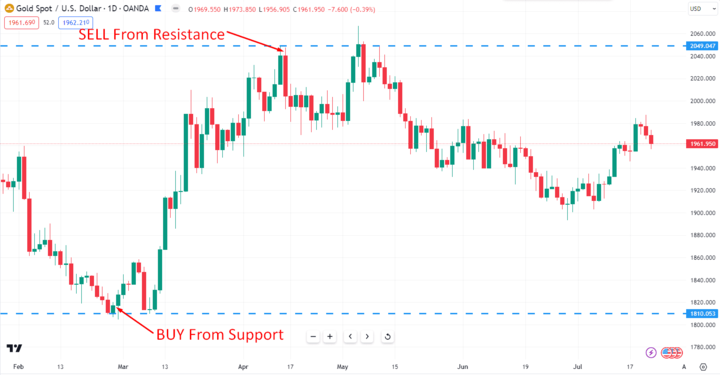
Image Source: TradingView
Support levels are price levels where gold tends to find buying interest, preventing it from falling further. On the other hand, resistance levels are price points where gold tends to encounter selling pressure, limiting its upward movement. Identifying these levels can help traders make more informed decisions about when to buy or sell.
Using moving averages to identify trends and entries

Image Source: TradingView
Moving averages smooth out price data and help traders identify trends more easily. The 50-day and 200-day moving averages are commonly used to determine the overall trend of gold prices. Crossovers between moving averages can signal potential entry or exit points.
Analyzing volume to confirm trend direction
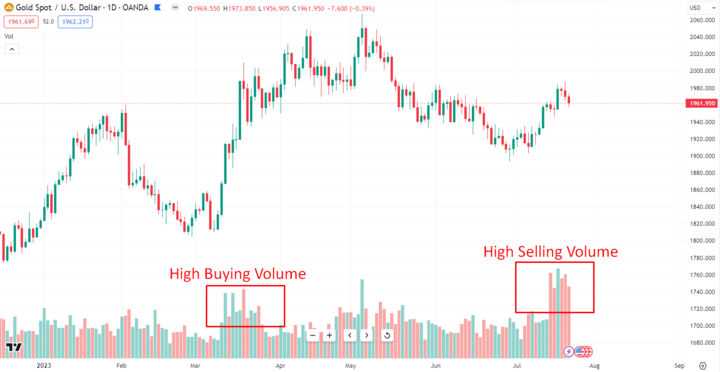
Image Source: TradingView
Trading volume is the number of shares or contracts traded in a security or commodity. Analyzing volume can help confirm the strength of a trend. Higher volume during price uptrends can indicate strong buying interest, while higher volume during downtrends can indicate increased selling pressure.
Benefits and limitations of technical analysis for gold
Technical analysis offers several advantages to the gold trader. It provides a structured approach to analyzing price patterns, allowing for timely decision-making. It is also well suited for short to medium-term trading strategies.
However, technical analysis has its limitations. It does not take into account fundamental factors such as economic data, geopolitical events, and interest rate decisions. As a result, unexpected news or events can cause significant price swings that technical analysis alone may not be able to predict.
By incorporating technical analysis into your gold trading strategy and complementing it with fundamental analysis, you can make more educated and informed decisions. Remember to remain disciplined and patient in your approach, as the gold markets can be volatile. Using technical analysis along with other market indicators can help you better navigate the complexities of gold trading during inflationary times and interest rate hikes.
Fundamental Analysis Framework

Image Source: Unsplash
As inflationary pressures and interest rate hikes continue to impact the global economy, you need a solid fundamental analysis framework to navigate the complexities of the gold market. Fundamental analysis involves evaluating various economic and geopolitical factors that influence the price of gold. Here are the essential components of a fundamental analysis approach to trading gold:
Monitoring Inflation Reports and Expectations
Inflation plays an important role in determining the value of gold as a hedge against rising prices. Monitoring inflation reports and expectations can help traders gauge the likelihood of further gold price appreciation during inflationary periods.
Evaluating Central Bank Policies and Interest Rate Outlook
Central bank policies and interest rate decisions can have a profound effect on the price of gold. When central banks signal potential rate hikes, it can lead to fluctuations in the value of the precious metal. Evaluating the outlook for interest rate hikes is essential for making informed gold trading decisions.
Factor in growth forecasts and fiscal policy
Economic growth forecasts and fiscal policies can also affect the price of gold. Strong economic growth can reduce demand for safe-haven assets such as gold, while uncertainty about fiscal policy can drive investors to the precious metal.
Assessing Geopolitical and Economic Uncertainty
Geopolitical events and economic uncertainties can cause volatility in financial markets, including the gold market. Understanding these events and their potential impact on gold prices can help traders navigate market fluctuations.
Understand the supply and demand dynamics of the gold market
The balance between supply and demand for gold can have a significant impact on its price. Factors such as mine production, central bank buying, and jewelry demand can all affect the supply-demand equation for gold.
Remember to stay abreast of the latest economic and geopolitical developments, as they can play an important role in shaping the dynamics of the gold market. Incorporating fundamental analysis into your gold trading strategy will give you valuable insight into the underlying drivers of gold prices. Combine fundamental analysis with technical analysis to make more informed trading decisions during periods of inflation and interest rate hikes.
A comprehensive understanding of both fundamental and technical aspects will enhance your ability to capitalize on gold price movements and optimize your trading success.
Effective Trading Strategies

Image Source: Unsplash
As inflationary pressures and interest rate hikes persist in the global economy in 2023, mastering effective trading strategies will be essential for success in the gold market. Incorporating effective trading strategies into your gold trading approach can enhance your ability to capitalize on market opportunities while mitigating risk. Here are key strategies to consider when trading gold in these market conditions:
Momentum strategies for trading breakouts and trend continuations
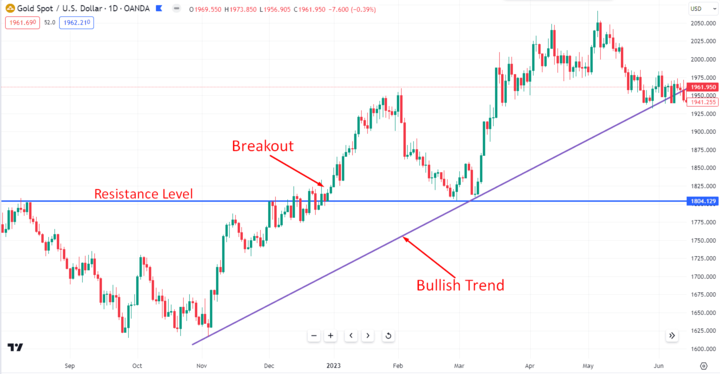
Image Source: TradingView
The Momentum strategies involve identifying strong price movements and trends in the gold market. Traders can enter positions when prices break out of key levels or continue in the direction of an established trend. The use of technical indicators and chart patterns can help identify favorable entry and exit points.
Mean reversion approaches for range-bound markets
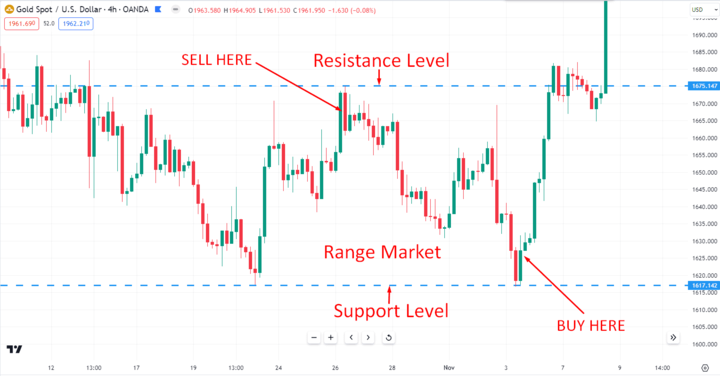
Image Source: TradingView
During periods of price consolidation and range-bound movements, mean reversion strategies can be effective. Traders can take advantage of price reversals from support and resistance levels to profit as the price returns to the mean within the range.
Hedging strategies based on correlations and diversification
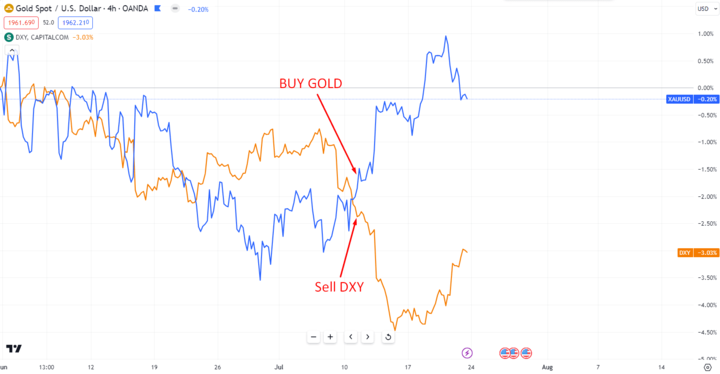
Image Source: TradingView
Gold is often viewed as a hedge against inflation and economic uncertainty. Traders can use correlation analysis to identify assets that have a negative correlation with gold, providing a potential hedging opportunity during volatile market conditions. In addition, diversifying your portfolio with different assets can help manage risk effectively.
The importance of risk management and position sizing
Risk management is paramount when trading gold, especially in times of inflation and interest rate hikes when markets can be unpredictable. Proper risk management techniques, such as setting stop loss levels and adhering to position sizing rules, can protect your capital and minimize losses. Emphasizing risk management and maintaining a clear trading plan will contribute to your long-term success in trading gold during inflationary periods and rate hikes.
Keys to Implementation and Risk Management
Trading gold during periods of inflation and interest rate hikes requires a blend of careful analysis, thoughtful decision-making, and disciplined execution. As you gain experience and refine your approach, you can position yourself for success in the dynamic and potentially rewarding gold market. By effectively incorporating technique and risk management into your gold trading strategy, you can improve your ability to adapt to changing market conditions and achieve more consistent results. To navigate the gold market with confidence, you must focus on the following essential keys:
Backtesting strategies and quantifying performance
Before implementing any trading strategy, it is important to thoroughly backtest it using historical data. Backtesting allows you to assess how the strategy would have performed in the past. By quantifying performance metrics such as risk-reward ratios and win rates, you can gain valuable insight into the effectiveness of the strategy.
Optimizing entry and exit points
Precise entry and exit points are critical to maximizing profits and minimizing losses. Set clear stop-loss orders to limit potential downside risk, and use take-profit levels to lock in profits when gold prices reach your predetermined targets.
Managing trade size, leverage, and portfolio weighting
Careful consideration of trade size and leverage is essential to avoid overexposure and excessive risk-taking. Diversifying your gold trading positions across different assets can also help mitigate risk and balance your overall portfolio.
Maintaining trading discipline and learning from mistakes
Discipline is paramount in gold trading, especially during volatile times. Stick to your trading plan and avoid making impulsive decisions based on emotions. Learn from past mistakes to refine your strategies and improve your overall trading approach.
Conclusion and Final Tips
As we navigate the challenges of inflationary times and rising interest rates, successful gold trading requires adaptability and a well-rounded approach. Shifting market dynamics require nimbleness and the ability to adjust strategies as conditions change.
Instead of trying to predict market movements, focus on timeless trading principles such as disciplined risk management and proven strategies. By combining fundamental analysis to understand underlying factors, technical analysis to identify price patterns and prudent risk management, you can make more informed decisions.
